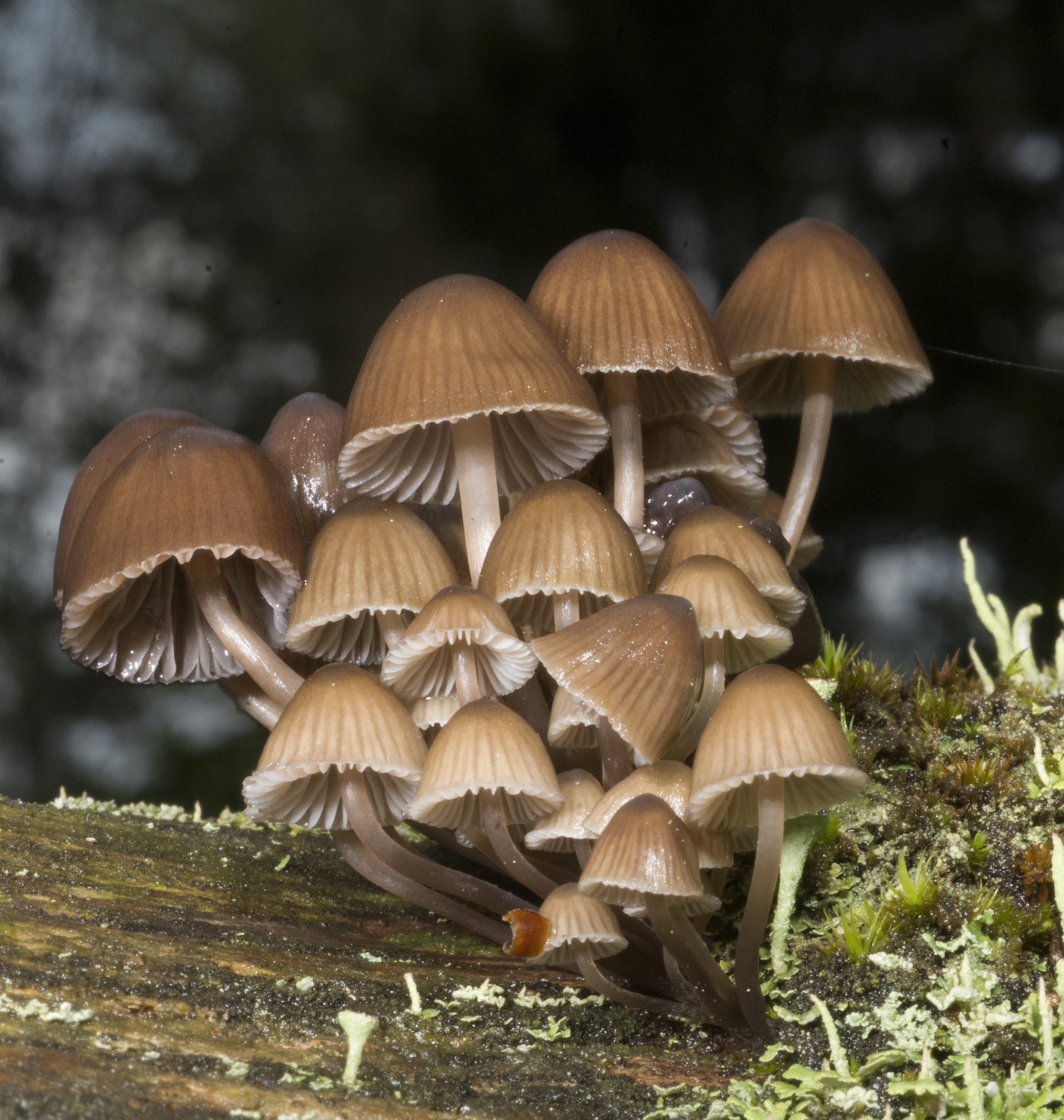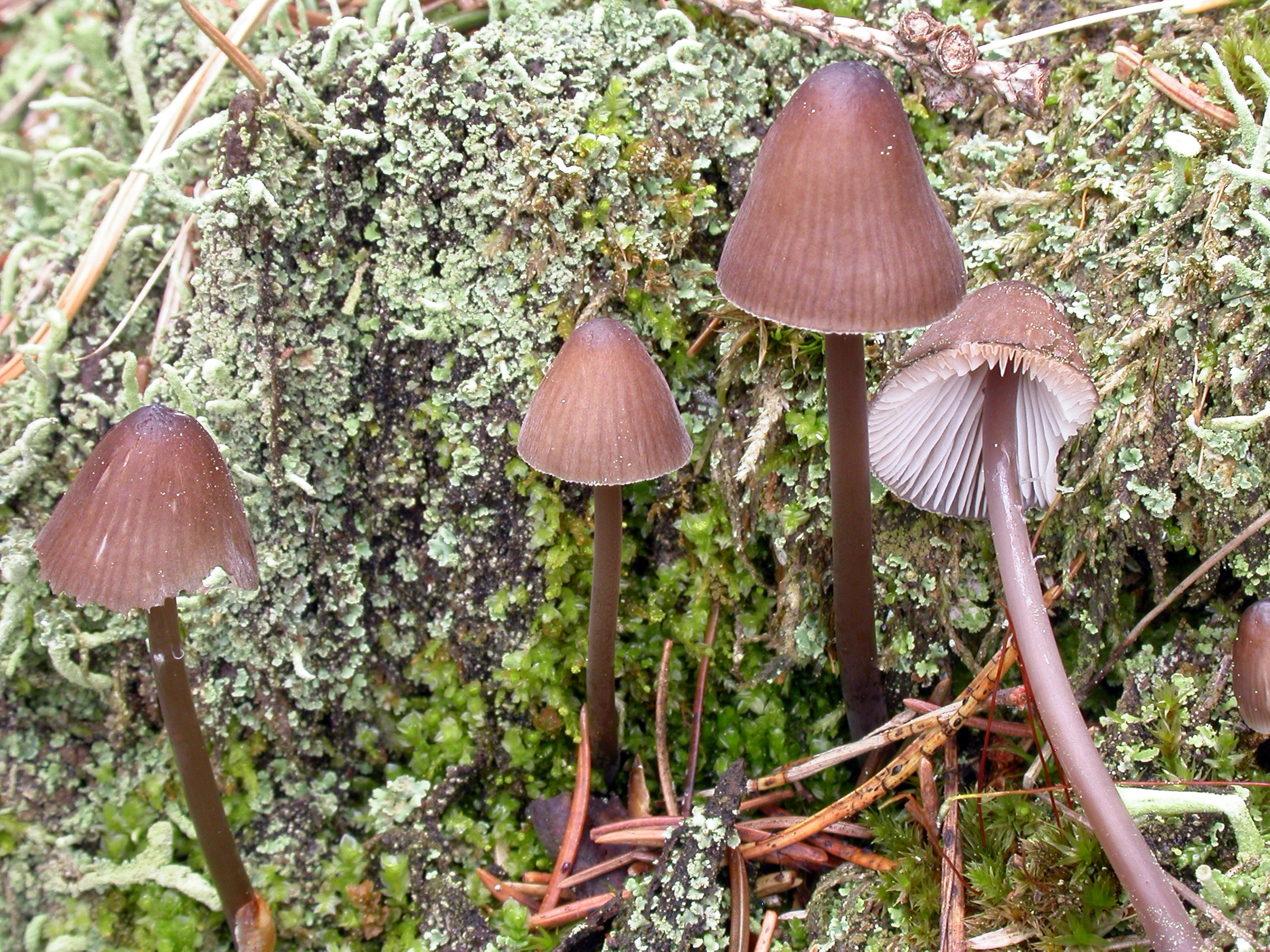Mycena stipata
Mycena stipata
Description
Cheilocystidia
Cap 10-30 mm across, conical or campanulateto parabolic or convex, shallowly to hardly sulcate, translucent-striate, somewhat lubricous when wet, hygrophanous, pruinose, glabrescent, fairly dark brown to medium brown or greyish brown with darker striae. Gills 13-18 reaching the stem, adnexed to adnate, more or less decurrent with a short tooth, grey to dark grey with paler edge. Stem 20-70 x 1-2 mm, fragile, cylindrical, equal, pruinose in the entire length, glabrescent except for the apex, somewhat lubricous when wet, pale to dark sepia brown, usually paler at the apex, apex blackish brown in younger specimens, base densely covered with long, coarse, flexuous, white fibrils. Odour nitrous. Basidia 25-30 x 8-9 µm, clavate, 4-spored. Spores 9-11.5 x 5.3-6.5 µm, Q = 1.5-2.1, Qav ˜ 1.7, pip-shaped to somewhat elongated, amyloid. Cheilocystidia 33-45 x 7-14 µm, forming a sterile band, fusiform, subcylindrical or lageniform, apically with a shorter or longer, simple to furcate neck. Pleurocystidia absent. Lamellar trama dextrinoid. Hyphae of the pileipellis 2-4.5 µm wide, smooth or covered with some scattered cylindrical excrescences, embedded in gelatinous matter. Hyphae of the cortical layer of the stem 1.5-3.5 µm wide, embedded in gelatinous matter, smooth or covered with scattered cylindrical excrescences; the terminal cells diverticulate, variously shaped. Clamps present in all tissues.
Ecology and distribution
Cespitose and in dense groups on coniferous wood (Pinus, Picea). Late summer to autumn. Rather common all over the country.


